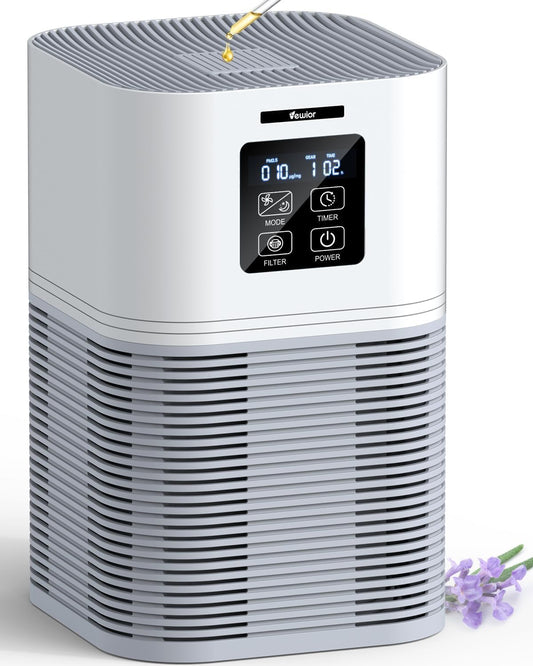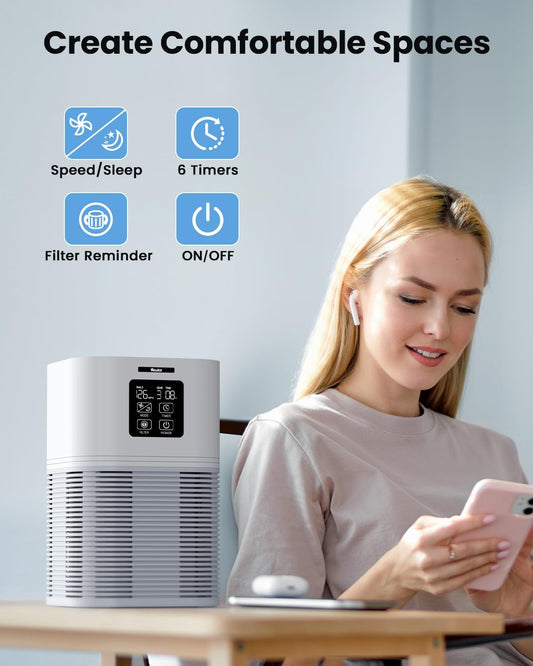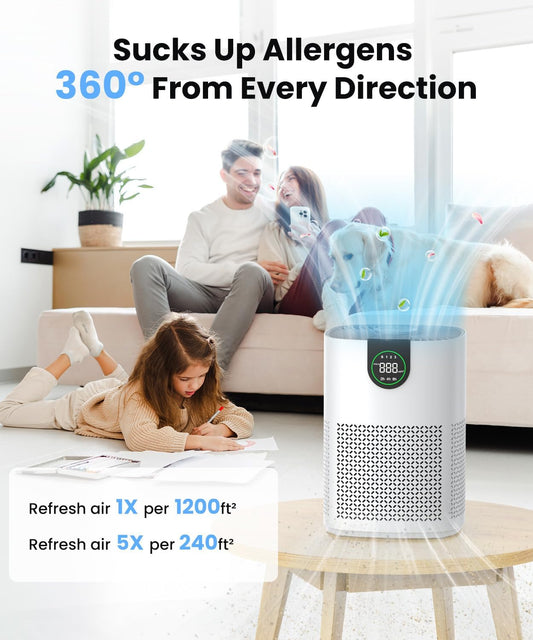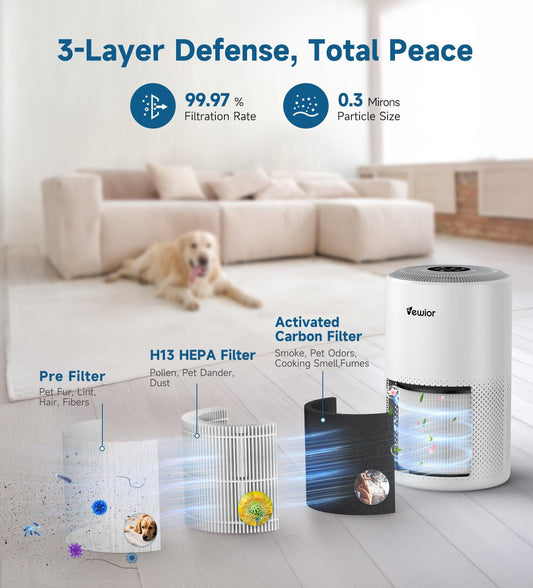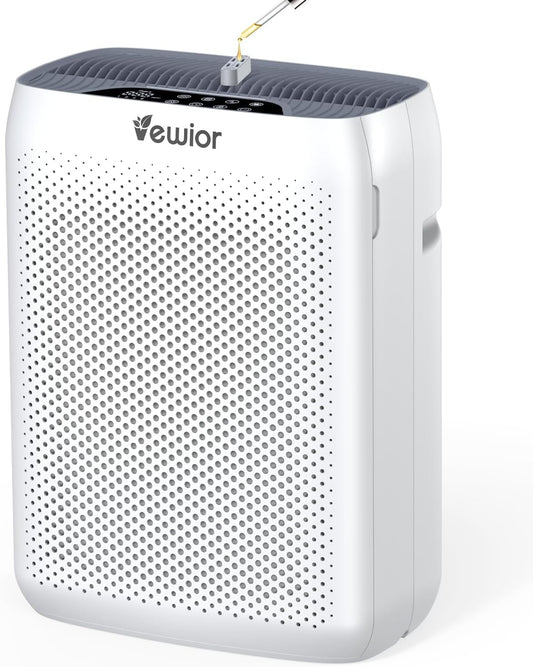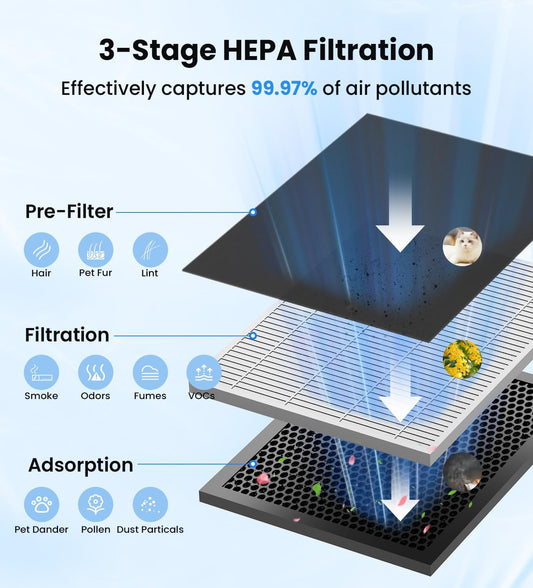What is Dust and How Does it Affect Our Health?
Dust is a common household irritant that is made up of a mixture of tiny particles, including dead skin cells, pet dander, pollen, mold spores, and other pollutants. While dust is usually harmless, prolonged exposure to high levels of it can lead to respiratory problems, allergies, and other health issues.
Dust particles can cause a variety of health problems, including coughing, wheezing, and shortness of breath. For individuals with asthma or other respiratory conditions, inhaling dust can trigger an attack. Additionally, exposure to high levels of dust can cause eye irritation, sore throat, and sinus congestion.
One of the most effective ways to reduce dust exposure is by using an air purifier. Air purifiers work by pulling air through a series of filters, which trap pollutants and allergens, including dust particles. But do air purifiers really help with dust? In this essay, we will explore the effectiveness of air purifiers in reducing dust levels and improving air quality.
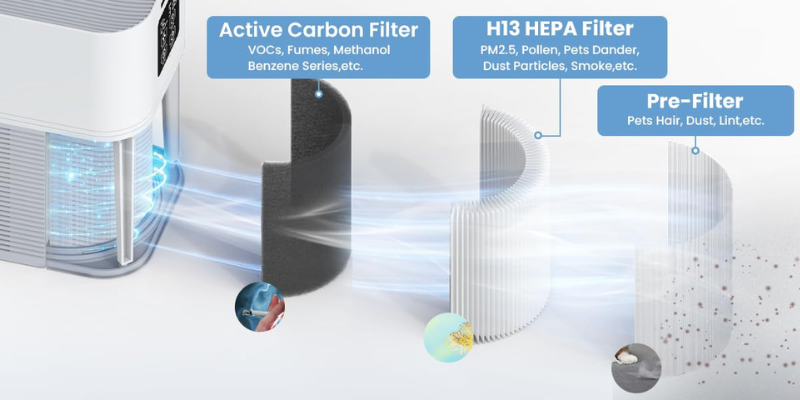
How Do Air Purifiers Work?
Air purifiers work by using filters to trap pollutants and allergens. The most common type of filter used in air purifiers is a HEPA (High-Efficiency Particulate Air) filter. HEPA filters are designed to capture particles as small as 0.3 microns, which includes most dust particles.
Air purifiers typically have several filters, each designed to capture different types of pollutants. The pre-filter captures larger particles such as hair and pet dander. The activated carbon filter captures odors and chemicals. The HEPA filter captures smaller particles such as dust, pollen, and smoke.
Once the air is pulled through the filters, it is released back into the room. Some air purifiers also have additional features such as ionizers, which release negatively charged ions that attach to positively charged pollutants, causing them to fall out of the air and onto surfaces in the room.
Can Air Purifiers Reduce Dust Levels?
Yes, air purifiers can effectively reduce dust levels in a room. By capturing dust particles in the filters, air purifiers prevent them from recirculating back into the air. Over time, this can significantly reduce the amount of dust in a room.
However, it is important to note that air purifiers are not a cure-all for dust problems. They can only capture the dust particles that are in the air, and cannot do anything about dust that has already settled on surfaces in the room. To truly reduce dust levels, it is important to regularly clean and dust surfaces in the room.
Additionally, air purifiers are only effective in the room in which they are located. If you have multiple rooms in your home, you will need multiple air purifiers to effectively reduce dust levels throughout your home.
Are Some Air Purifiers Better for Dust Than Others?
Yes, some air purifiers are better for dust than others. The most effective air purifiers for reducing dust levels are those that use a HEPA filter. HEPA filters are designed to capture particles as small as 0.3 microns, which includes most dust particles.
It is also important to choose an air purifier that is appropriately sized for the room in which it will be used. A larger air purifier will be able to effectively clean a larger room, while a smaller air purifier may not be able to effectively capture all of the dust particles in a larger room.
Finally, consider an air purifier that has additional features such as an activated carbon filter or an ionizer. These features can help capture odors and chemicals, as well as further reduce the amount of dust in the air.

Other Ways to Reduce Dust Levels
While air purifiers are an effective way to reduce dust levels, there are also other steps you can take to further reduce the amount of dust in your home. Some of these steps include:
- Regularly cleaning and dusting surfaces in your home: This is perhaps the most effective way to reduce dust levels. By regularly cleaning and dusting surfaces, you can remove dust that has settled on them and prevent it from recirculating into the air.
- Vacuuming regularly: Vacuuming can help to remove dust and other particles that have settled on carpets and other surfaces. Make sure to use a vacuum with a HEPA filter to prevent dust from being blown back into the air.
- Using a high-quality furnace filter: If you have a forced-air heating system, make sure to use a high-quality furnace filter that can capture dust and other particles. Change the filter regularly to ensure it remains effective.
- Controlling humidity levels: Dust particles can become airborne more easily in dry air. Use a humidifier to maintain a comfortable level of humidity in your home, especially during the winter months when indoor heating can dry out the air.
- Keeping pets clean: Pets can contribute to dust levels in your home. Regularly brushing and bathing your pets can help to reduce the amount of pet dander in the air.
- Using dust mite covers: Dust mites are a common allergen that can contribute to dust levels. Using dust mite covers on your mattress, pillows, and other bedding can help to reduce the amount of dust mites in your home.
Conclusion
Air purifiers can be an effective way to reduce dust levels in your home. By using a HEPA filter, air purifiers can capture most dust particles and prevent them from recirculating into the air. However, air purifiers are not a cure-all for dust problems and must be used in conjunction with other measures, such as regular cleaning and dusting. By taking a multi-faceted approach to reducing dust levels in your home, you can create a healthier living environment for you and your family.


